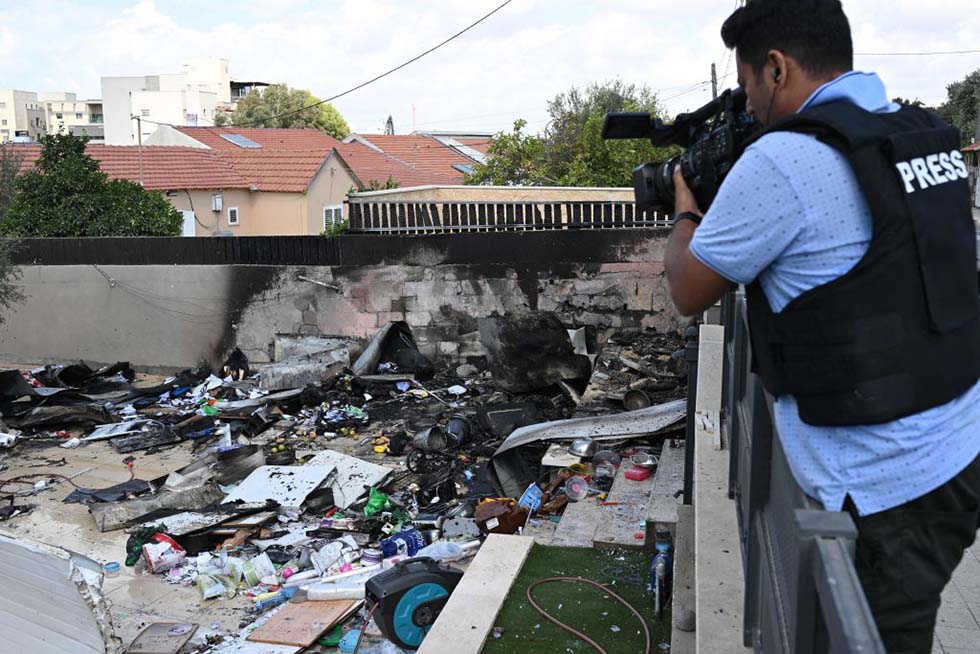Journalist Death Toll Grows in Middle East Conflict
A dozen have been killed and more injured or missing

As of Saturday (October 14), 12 journalists had been killed covering Israel's response to the Hamas terrorist attacks on that country.
That is according to the Committee to Protect Journalists, which investigates all reports of journalists killed, injured, kidnapped, or detained/imprisoned.
In addition to the deaths, CPJ said that two were missing and eight were injured.
The State Department said Friday (October 13) that it is looking into the reports of journalist deaths and injuries. A spokesperson told Reuters, “Today and every day, we stand with journalists around the world who do critical work that we all rely on every single day, sometimes in dangerous conditions.”
“CPJ emphasizes that journalists are civilians doing important work during times of crisis and must not be targeted by warring parties,” Sherif Mansour, CPJ Middle East and North Africa program coordinator, said in a statement posted online.
CPJ called on all parties to take measures to better protect journalists, calling them civilians doing important work.
The following list of the slain journalists, which will almost certainly grow in the coming days, was supplied by CPJ and is based on both media reports and CPJ's own sources in the region:
The smarter way to stay on top of the streaming and OTT industry. Sign up below.
- Husam Mubarak, a journalist with Al Aqsa Radio;
- Issam Abdallah, a videographer working for Reuters, who was killed in southern Lebanon;
- Ahmed Shehab, a journalist working for Sowt Al-Asra Radio, along with his wife and three children, were killed in an airstrike;
- Mohamed Fayez Abu Matar, a freelance photojournalist, killed in an airstrike;
- Saeed al-Taweel, editor-in-chief of the AlKhamsa website, killed in an airstrike;
- Mohammed Sobh, a photographer with the Khabar News Agency, killed in an airstrike;
- Hisham Alnwajha, a journalist with Khabar, killed in the same airstrike;
- Assaas Shamlakh, feelance journalist and nine members of his family, killed in an airstrike;
- Yaniv Zohar, an Israeli photographer, killed in an attack on Kibbutz Nahal Oz;
- Mohammad Al-Salhi, photojournalist, shot;
- Mohammad Jarghoun, journalist with Smart Media, shot while reporting from the Gaza Strip;
- Ibraham Mohammad Lafi, a photographer for Ain Media, shot at the Gaza Strip Erez Crossing.
The known injured are Ibrahim Qanan, a correspondent for Al-Ghad channel, who was hit by shrapnel; Firas Lutfi, a Sky News correspondent, who was reportedly attacked by police; Reuters journalists Thaer Al-Sudani and Maher Nazeh; staffers from Al Jazeera TV Elie Brakhya and Carmen Joukhadar; and Agence France-Press journalists Christina Assi and Dylan Collins.
The known missing are Haitham Abdelwahid, a Palestinian photographer from Ain Media, and Roee Idan, an Israeli photographer who may be among the hostages along with his 3-year-old daughter.
Contributing editor John Eggerton has been an editor and/or writer on media regulation, legislation and policy for over four decades, including covering the FCC, FTC, Congress, the major media trade associations, and the federal courts. In addition to Multichannel News and Broadcasting + Cable, his work has appeared in Radio World, TV Technology, TV Fax, This Week in Consumer Electronics, Variety and the Encyclopedia Britannica.

